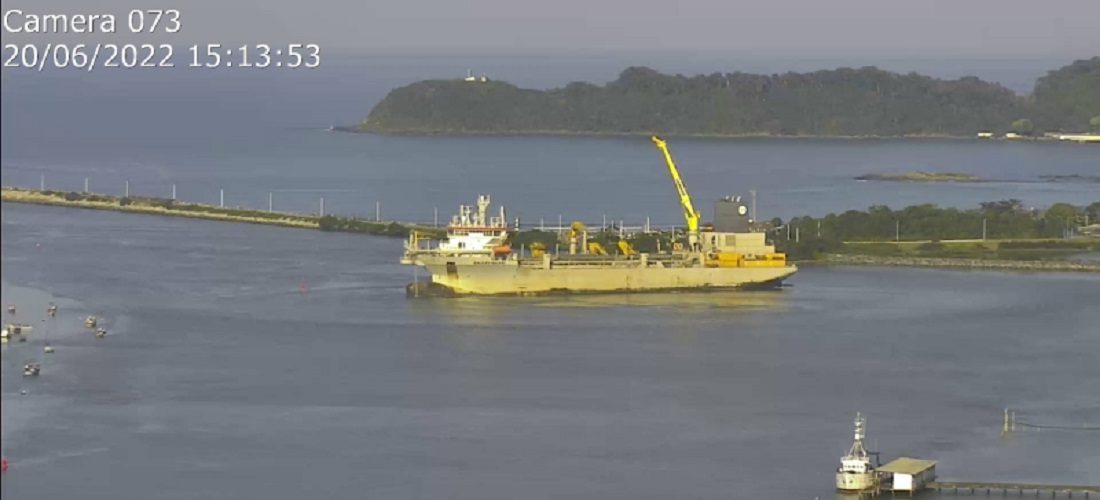
Port of São Francisco do Sul begins dredging of access channel
Nov, 04, 2024 Posted by Gabriel MalheirosWeek 202444
The Belgian dredger Galileo Galilei began operations on Monday, November 4, to restore the minimum depth of 14 meters throughout the Babitonga Port Complex access channel. Sediment removal will cover the full 22-kilometer stretch of the channel—17 kilometers in the inner channel and 5 kilometers in the outer channel—in Babitonga Bay.
Around the Port of São Francisco do Sul, dredging operations include the turning basin, docking areas, and berths.
The project, funded by the port authority at a cost of R$ 37 million, is expected to take between 30 and 40 days. An estimated 1.6 million cubic meters of sediment will be removed and deposited in an offshore disposal area designated by environmental authorities, 23 kilometers from the Port of São Francisco do Sul.
The chart below reveals the top most exported commodities from January to September at the Port of São Francisco do Sul. The information was featured in Datamar’s DataLiner.
Port S. Francisco do Sul Top Cargo | Jan-Sep 2024 | WTMT
Source: DataLiner (click here to request a demo)
Dredger That Widened Balneário Camboriú Beach
The dredger, operated by Jan de Nul do Brasil, is one of the most advanced globally, with a length of 166 meters and a carrying capacity of 18,000 cubic meters, the equivalent of 1,800 dump trucks.
It is a self-propelled trailing suction hopper dredger, also known as a hopper dredger, and can accommodate a crew of 32. This same equipment was used for the beach nourishment project in Balneário Camboriú in 2021.
According to Port President Cleverton Vieira, the dredging demonstrates the terminal’s ongoing investment in infrastructure upgrades, addressing a key request from the port community.
“Dredging enhances navigational safety, speeding up vessel entry and exit within Babitonga Bay,” Vieira noted that this dredging is part of a series of self-funded investments by the port administration.
“In 2024 alone, we’ve overhauled our IT systems with a R$ 25 million investment, completed the revitalization of the rail access to the Grain Terminal, purchased new vehicles to improve working conditions for our staff, and upgraded fenders and navigational aids in the access channel,” he emphasized.
“All of this has been made possible by controlling operating expenses, allowing us to reinvest continually in both land and water infrastructure, as directed by Governor Jorginho Mello.”
How the Dredging Process Works
Dredging operations consist of several stages, with key steps as follows: dredging and loading sediment into the hopper, navigating to the designated disposal area with a full hopper, discharging the sediment at the disposal site, returning to the dredging area with an empty hopper, and restarting the dredging cycle.
In practice, suction pipes are positioned on the seabed, where powerful pumps draw sediment into the hopper of the Galileo Galilei. After loading, the dredger travels to the offshore disposal area, where it releases the material onto the seabed.
-
Sugar and Ethanol
Dec, 31, 2021
0
Copersucar prepares itself for a new growth cycle
-
Fish
Apr, 17, 2023
0
Revenue from fish exports breaks record in Brazil
-
Ports and Terminals
Oct, 16, 2019
0
Argentina lowers Port of Buenos Aires tariffs
-
Economy
Oct, 07, 2024
0
Brazilian exports total US$ 255.4 billion by September

